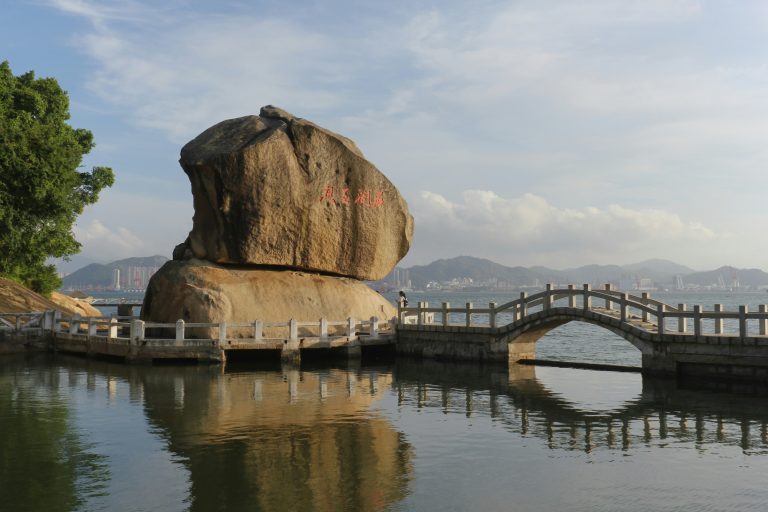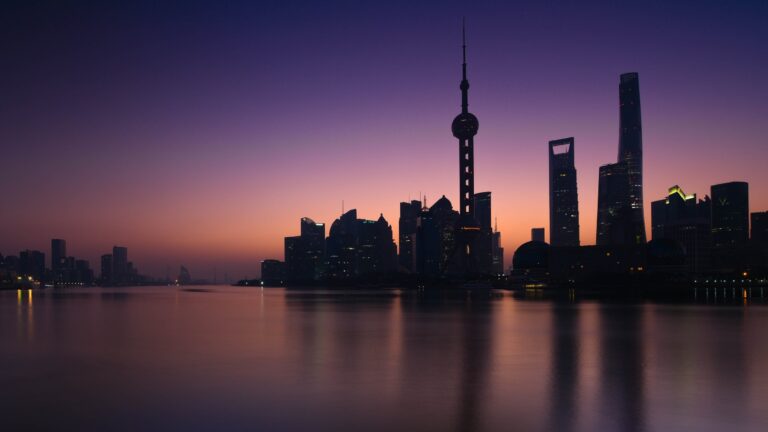
Editor’s note: This post continues our series highlighting the stories of CP staff adopting new names, either Chinese or English. Naming is an important part of cultural identity, and understanding the stories behind the new names we take on when entering new cultural contexts helps us to understand each other and our histories.
EF Gregory grew up in the American South East, but spent seven of the past thirteen years living and working in China. She currently lives in the Los Angeles metro area with her husband and three small children. Gregory serves as CP’s Assistant Blog Editor.
William Shakespeare wrote that a rose by any other name would smell as sweet—but I’ve always disagreed. A name goes before you, conveying something about who and what type of individual you are.
Even in English-speaking countries, where names don’t overtly convey parental hopes for their child, parents who name their child “Ace” or “Candy” likely have different goals than parents who chose the name “Henry” or “Eleanor.” This is even more true in China, where names often explicitly express what is wished for or expected of someone. If you want your child to be bright and cheerful, then you can name them just that: Bright Cheerful. They’ll walk around forever, expressing their parents’ hopes and dreams with their very identity.
>
”Names often explicitly express what is wished for or expected of someone. ”
I grew up in the States with a very normal, vanilla name. I don’t hate it, but I’ve never loved it, either. In some ways, it matched the way I thought of myself: nothing very special and not especially noteworthy. I’ve always loved names, though; even as a child when I couldn’t settle at night, I would lull myself to sleep by pondering the best names for my hypothetical, future children.
I moved to China as a young adult, speaking not one word of Mandarin. As with every new student of Chinese, I was told I needed to pick a Chinese name. This was a task I was not up to. At that point, Mandarin was a language of indecipherable, one-syllable sounds, so I turned to a Chinese friend. I asked my very first friend to help me out, and she did. She took my English name, used the beginning sounds of my first, middle, and family names, and gave me a new, Chinese identity. I took the name, without thinking or questioning if I needed another name, because my friend said it was a good choice.
At first, my Chinese name didn’t mean much to me. I was confused by the way Chinese people introduced themselves, drawing the often complicated name characters on their hands and explaining their names by referencing other compound words that used the same characters. There are many characters that sound the same but express totally different meanings. For example, someone named Ming (明) might introduce themselves by saying, “My name is Ming, like in mingxing, [the Chinese word for ‘celebrity’].”
My name, like all Mandarin words, was difficult to pronounce. My tones were bad, which meant I often said my own name incorrectly, and I had no idea what words used the same characters as the ones in my name. The whole thing felt like an elaborate cipher, one I couldn’t quite crack. But slowly, I began to learn.
The first character in my given name could be used to signify something leisurely, restful, relaxed. That didn’t feel like me, someone who was anxious about adjusting to a new place and very uptight about most aspects of my daily existence. The second character in my given name meant beautiful. I had certainly never thought of myself as beautiful!
>
”I liked having a beautiful name, one with a beautiful meaning.”
Attempting to be a good student, I practiced my new characters, carefully drawing the strokes. I worked on my tones, and I learned the best way to explain exactly which syllables were the ones in my specific name. “What a beautiful name!” people often commented when I introduced myself. I liked that. I liked having a beautiful name, one with a beautiful meaning, one that didn’t feel at all like me, but also felt like who I wished I was.
Several months after moving to China, I doodled that new name in my journal. I was praying that day, reading scripture, spending a quiet hour with God. As I sketched my new name, I realized these characters were not actually given to me by my Chinese friend: this new name, the one that meant “beautiful” and “restful,” came from my Heavenly Father.
He loved me, and when he looked at me, he didn’t see a plain, vanilla, stressed-out nobody. He saw his lovely daughter. And now I, too, could walk around this world, bearing my Father’s hopes and dreams. I didn’t have to live up to this identity: it was the name he had given me. It was who I was, how he saw me, what the world would hear when I told them how to call me.
>
”This new name, the one that meant “beautiful” and “restful,” came from my Heavenly Father. ”
Since that day years ago, I’ve never gotten over the truth that God names us, not with who we think we are, but with his love. I don’t live in China anymore, and I don’t use that name on a daily basis. But I love it, and I feel loved to bear it. I don’t live up to my name—but it’s okay. God made clear how he feels about me when he put that name over me like a new dress. My Chinese name reminds me God does not see me the way I see myself, but with the tender, gracious eyes of a dad whose child is the apple of his eye.































